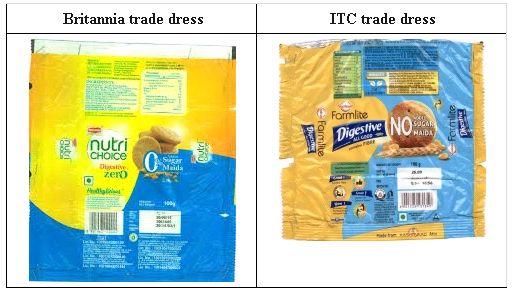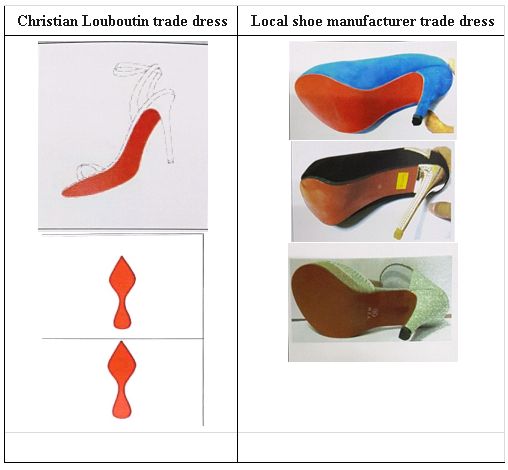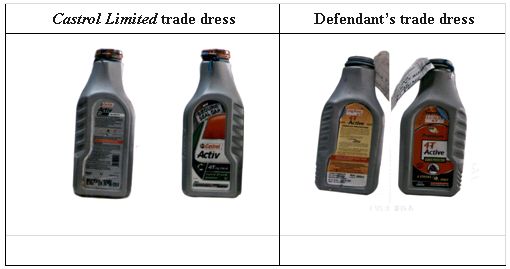9 April, 2018
Product packaging and visual impression of any product which is to be launched in the market, has become one of the most decisive factors regarding how well the product will attract the attention of the prospective consumers. Over decades there has been a transformational shift in the choices of the consumer; today along with the quality, the overall packaging of the product has also significantly affected the buying choices of the consumer.
Packaging, color pattern, color combination, shape of the product, texture, design, graphics and illustration which we call as trade dress are protected from being misused by the other parties who intends to imitate the overall look of a product in order to take advantage of its established goodwill and reputation. In India there is no separate provision for protection of trade dress, however, the common law of passing off provides protection of trade dress consisting of shape of goods their packaging and combination of colors etc. which is elucidated in Section 2 (zb) of the Trademarks Act 1999.
In order to qualify for protection, the overall appearance or image of the product has to be distinctive either having inherent distinctiveness or acquired distinctiveness. While extending protection to the right holders in order to protect their trade dress, the Courts have taken into account various factors rather than simply applying the conventional methods of looking into a dispute through the prism of trade mark infringement only. In 2017 the High Court of Delhi and Bombay High Court have delivered orders/judgments which would add on to the earlier cases defining common law pertaining to protection of trade dresses.
In one of the cases pronounced by the Division Bench of Delhi High Court where the dispute in the suit related to rights claimed by ITC in the yellow and blue packaging of Sunfeast Farmlite Digestive All Good Biscuits and contested that, Britannia have copied a similar color trades dress for its product Nutri Choice Digestive Zero Biscuits. The Single Judge while ruling in favor of the ITC observed that within the short span of time, the product of ITC has acquired popularity which was very evident from the sales of the product.
Aggrieved by the said order Britannia filed an appeal before Division Bench who subsequently reversed the order of Single Judge by making the following observations:
a) the get-up of the yellow and blue combination of the packaging did not attain distinction and therefore was not exclusively and distinctively associated with the ITC;
b) ITC mainly relied on its trade mark and trade name in their advertisements;
c) the court did not agreed with the Single Judge's view that within such short span of time, the yellow-blue packaging of ITC biscuits had become so associated with ITC so as to enable it to prevent its use by its competitors;
d) Court further opined that distinctiveness is acquired in get-up when it is not only novel but also possesses some striking feature. In the present case, the get-up and specifically the yellow-blue combination of packaging of ITC did not fall into that category of distinctiveness. The matter is still pending before the Supreme Court and has been adjourned sine-die for exploring settlement.
Another proceeding where the issue of trade dress was discussed last year was the case of Pidilite Industries Limited Vs Poma-Ex Products before Bombay High Court. Although, the core issue dealt by the court was the infringement of the Plaintiff's mark "FEVIKWIK" by the Defendant's mark "KWIKHEAL", but the question of trade dress also played a significant role in reaching the conclusion.
The Plaintiff argued that they have a registered and distinctive packaging of their product which was created in-house by an employee of the plaintiff during the course of employment and constitutes an original artistic work in which copyrights subsist. Defendant on the other hand has not been using its own trade mark packaging as registered but has been using the packaging which is similar to that of Plaintiff's. The Plaintiff contention was that the Defendant has used every singly feature of its product packaging in its minutest details therefore the Plaintiff has a clear cut case of infringement and passing off and if goodwill and reputation of the Plaintiff's product is not protected, it will result into irreparable damage.
The Court while agreeing with the Plaintiff held that the packaging of the Defendant's product was likely to cause confusion among the public as the packaging of the two products were identical.
The issue of infringement of trade mark "Red Sole" pertaining to high end luxury shoe brand of famous designer Christian Louboutin was in question in Christian Louboutin Sas Vs Mr. Pawan Kumar & Ors.- CS (Comm.) 714 of 2016 in which the Delhi High Court declared the designer's 'Red sole' a well-known trademark.
In this case it was argued by the Plaintiff that the shoe with red sole clearly identifies Plaintiff's product distinguishing it from others. The 'RED SOLE' trademark has thus become the signature of the plaintiff. The trade mark "Red Sole" has registrations in different jurisdictions including India and simentianously it enjoys a trans-border reputation by virtue of various factors. It has also got spilled over reputation in India from various other countries as the consumer across the globe are well aware of the goodwill and reputation of the mark even before it was formally launched in India. The Defendants in the suit were local shoe dealers manufacturing and selling the shoes with the red sole thereby infringing the trade mark of the Plaintiff.
The Court, thus after looking into the material evidence led by the Plaintiff permanently injuncted the Defendants from manufacturing, selling or in any way dealing with the footwear bearing the Plaintiff's registered trade mark for "Red Sole" and simultaneously awarded damages in favour of the Plaintiff. This is also the first instance in India where any Court has declared a trade dresses as a well-known status.
Early this year, in M/s Castrol Limited & Anr. Vs Iqbal Singh Chawla & Anr.- CS (OS) 4 of 2011, the Castrol Limited sued the Defendants who were involved in selling 4T oil under the trade mark "Lumax Active" who were said to have infringing the trade mark "Castrol Active" which was separately registered in the name of Castrol Limited. Castrol Limited, the Plaintiffs here claimed relief in relation to its trade dress, copyright in packaging, including the shape of the container of the bottle. The Plaintiffs' case was that the Defendants have copied the exact trade dress, shape of the bottle, label lay-out and colour scheme of the Plaintiffs which amounts to infringement of trade mark, copyright as well as makes a case of passing off.
The Court opined that if there is a comparison between trademarks "Castrol Active" of the Plaintiff and "Lumax Active" of the Defendant, there does not appear to be any deceptive similarity between the marks if it is seen in isolation of the trade dress, colour scheme, packaging, design, layout, shape and configuration.
Thus, the moment when the rival trademarks are examined in conjunction with the trade dress, colour scheme, packaging, design, layout, shape and configuration, it becomes evidentially clear that adoption of the trade mark "Active" by the Defendants is clearly a dishonest adoption to encash upon the goodwill and reputation of the Plaintiffs. In this said case though the Court found that the rival marks were different the dishonesty of the Defendants lied in adopting the exact same trade dress. The Court however added that the said injunction will not affect the right of the Defendants, if the Defendants use the word "Active" in completely different trade dress, colour scheme, packaging, design, layout, shape and configuration.
Today the market is exploding with the different types of products available in the market, be it retail shops, malls or online shopping forum, where the multiplicity of products makes the choice of the consumers based on recall by memory difficult. For the same reason today, the colour schemes and product packaging play an indispensable part in finally arriving at the decision regarding the choice of the product in the market. Courts have taken due care in attributing the growing importance to not only the trade marks but also to the overall look of the product which is known as trade dress.
For further information, please contact:
Gautam Kumar, LexOrbis
mail@lexorbis.com

.jpg)









